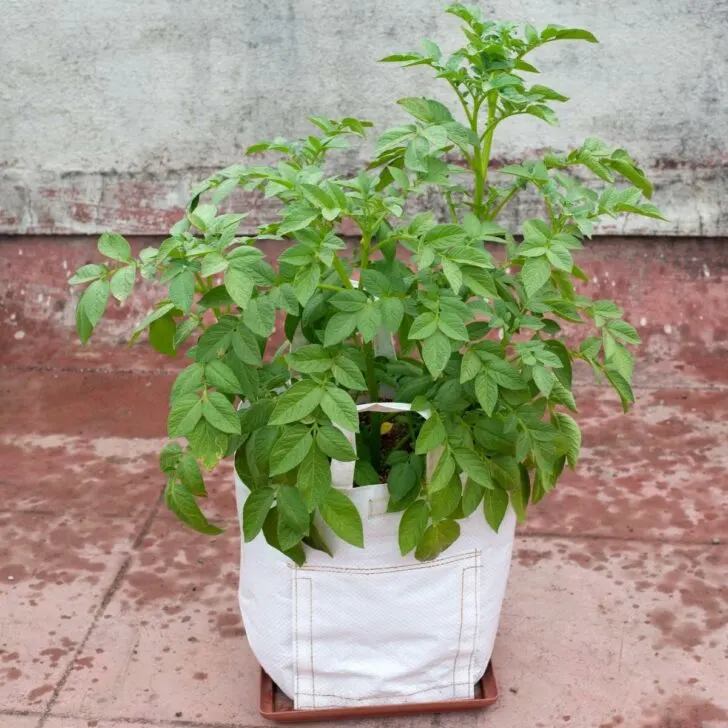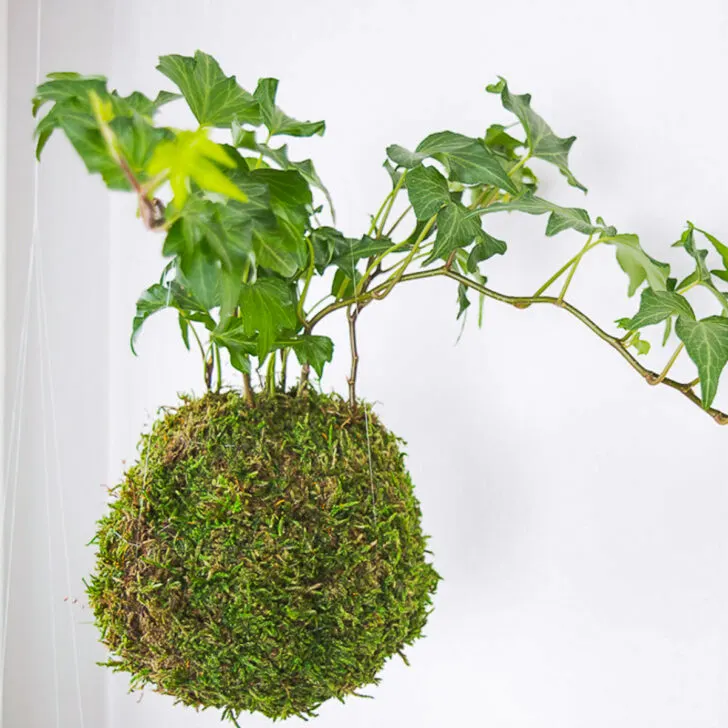Carnivorous plants are fascinating AND helpful! Create this beautiful carnivorous bog planter, and watch them gobble up those pesky insects!

Hidden among these grasses and ferns are voracious killers! Carnivorous plants, such as Venus Fly Traps, Sundews and Pitcher Plants, are fascinating plants that eat bugs that fall into their sticky traps. You can create a miniature version of their natural habitat with this bog planter garden!
This post contains affiliate links for your convenience. Purchases made through these links may earn me a small commission at no additional cost to you.
My son's first Venus Fly Trap, which he named Jaws, lived in its plastic pot from the store with a tray of water underneath. Not exactly the most attractive display, but it kept Jaws happy! 🙂
He wanted to expand his plant collection, and I wanted to create something a little more visually appealing. Luckily, our local nursery was teaching a class on how to make carnivorous bog planters. Family learning time!
Materials Needed for Carnivorous Bog Planter
- Wide, shallow pot or planting dish without drainage holes
- I found mine in the water plants section of the nursery.
- Carnivorous plant soil (or create your own mix from the items below)
- Horticultural charcoal
- Carnivorous plants
- Venus Fly Traps, Pitcher Plants and Sundews are the most common varieties.
- Other water plants
- I used Juncus effusus, Isolepis Fiber Optic Grass and Blechnum Alpine water fern.
- Small rocks
- Distilled or rain water
How to Pot Carnivorous Plants
Mix up the soil
The goal is to replicate the bog environment where carnivorous plants naturally grow. The soil is nutrient-poor, which is why they evolved to eat insects!
Check the labels if you're mixing your own soil. If there's added fertilizer in the peat moss or salt in the sand, you could harm the plants in your bog planter. You can buy premade carnivorous plant soil to avoid any problems.
My local garden nursery recommends the following carnivorous plant soil recipe: three parts peat moss to one part perlite and one part sand. Mix them all in a separate container from your planter bowl.
Spread a layer of horticultural charcoal at the bottom of the planter. This will absorb impurities and keep the standing water from getting stinky over time.
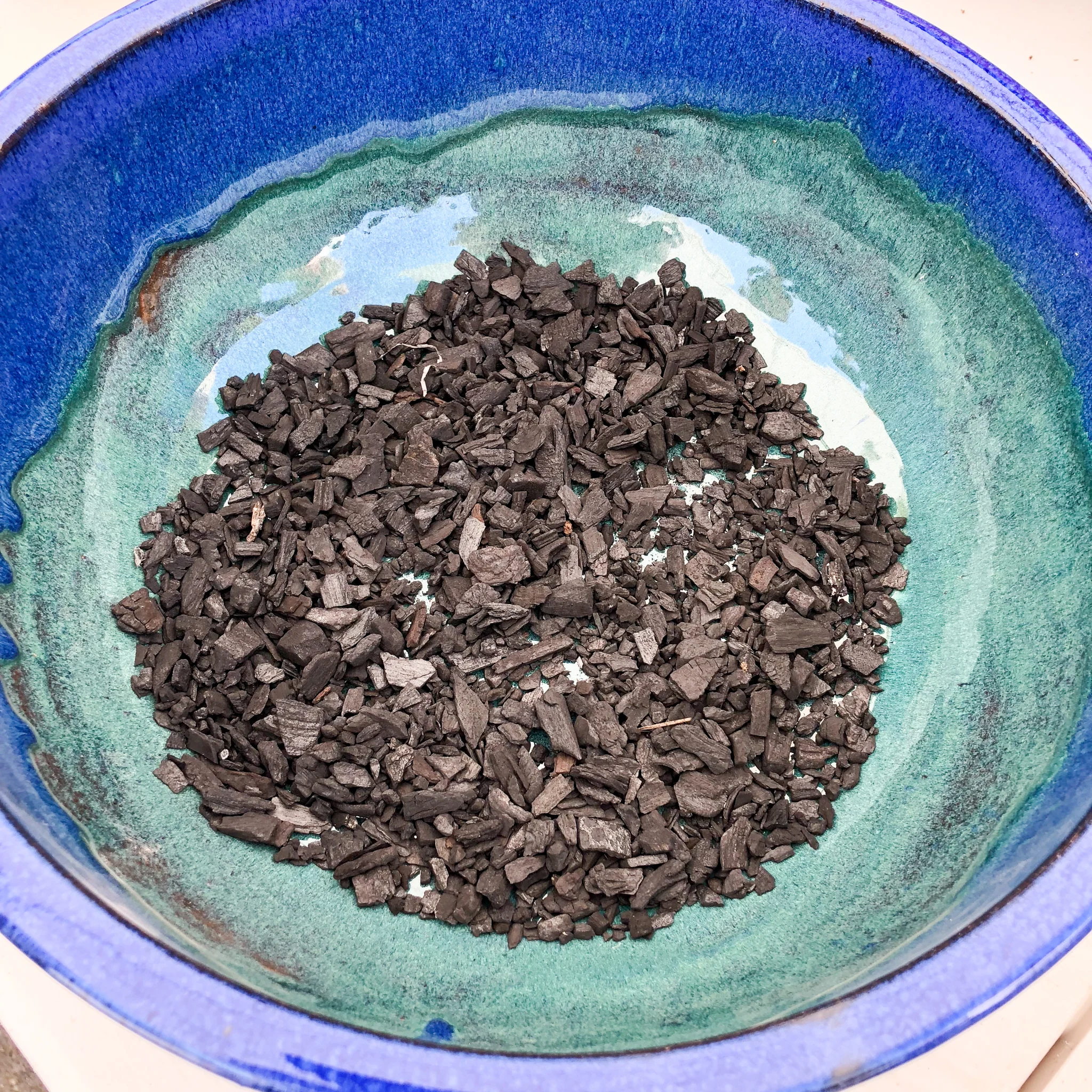
Fill the rest of the planter with your carnivorous plant soil mixture.
Add Carnivorous Plants and Other Water Plants
Decide how you want to arrange your plants before you remove them from their pots. Some varieties, like this Pitcher Plant, don't like their roots to be disturbed. Handle them as little as possible to keep them happy!

Keep the base of each plant above the lip of the planter. This will prevent them from rotting when the water level is high.
Smaller plants like Venus Fly Traps and this Sundew are placed near the front, where the sunlight won't be blocked.
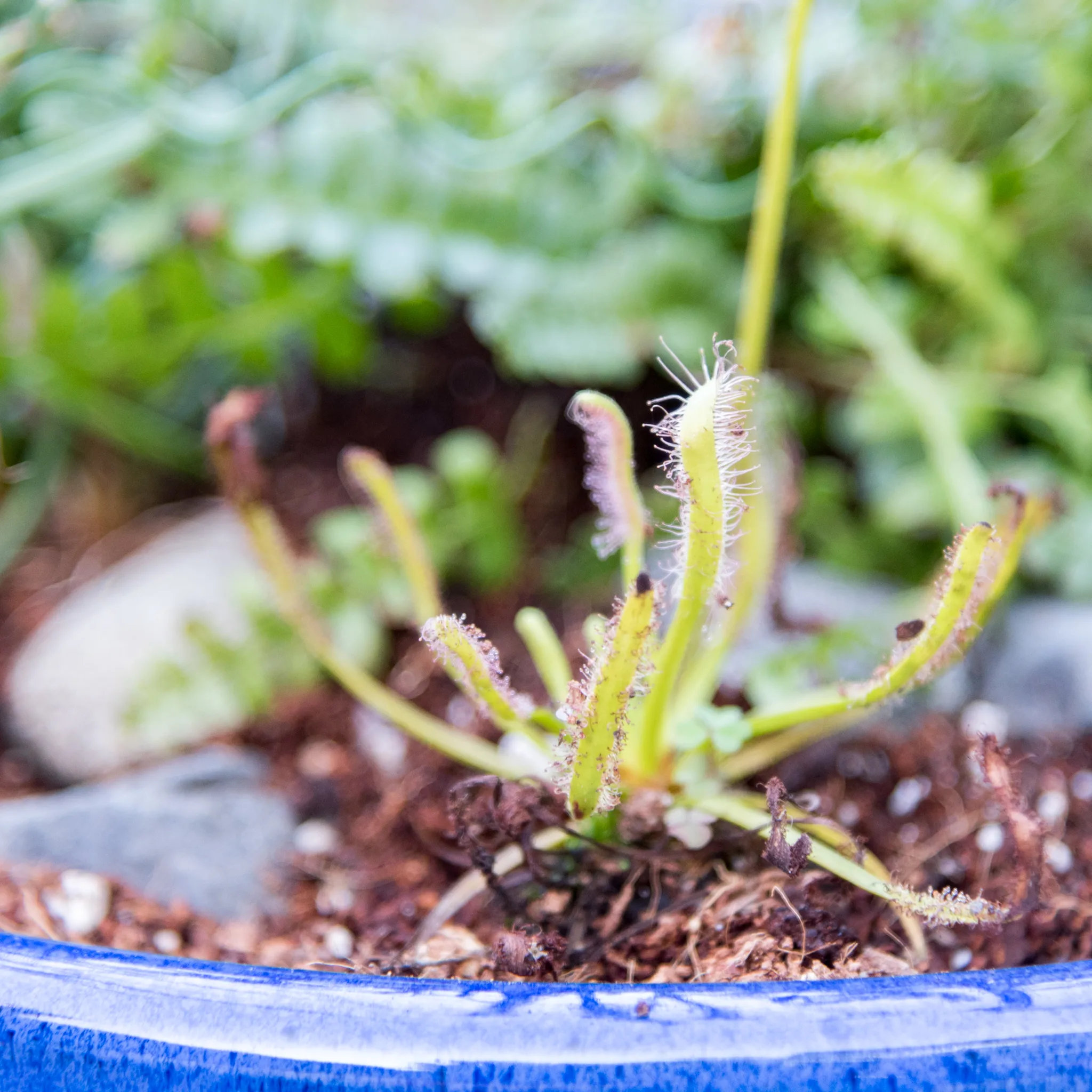
Water loving plants, like this Fiber Optic grass, curly Juncus effusus, and Alpine Water Fern, give texture and variety to the planter. I love how they spill over the sides of the bowl and blend together with the carnivorous plants to create a natural looking environment.
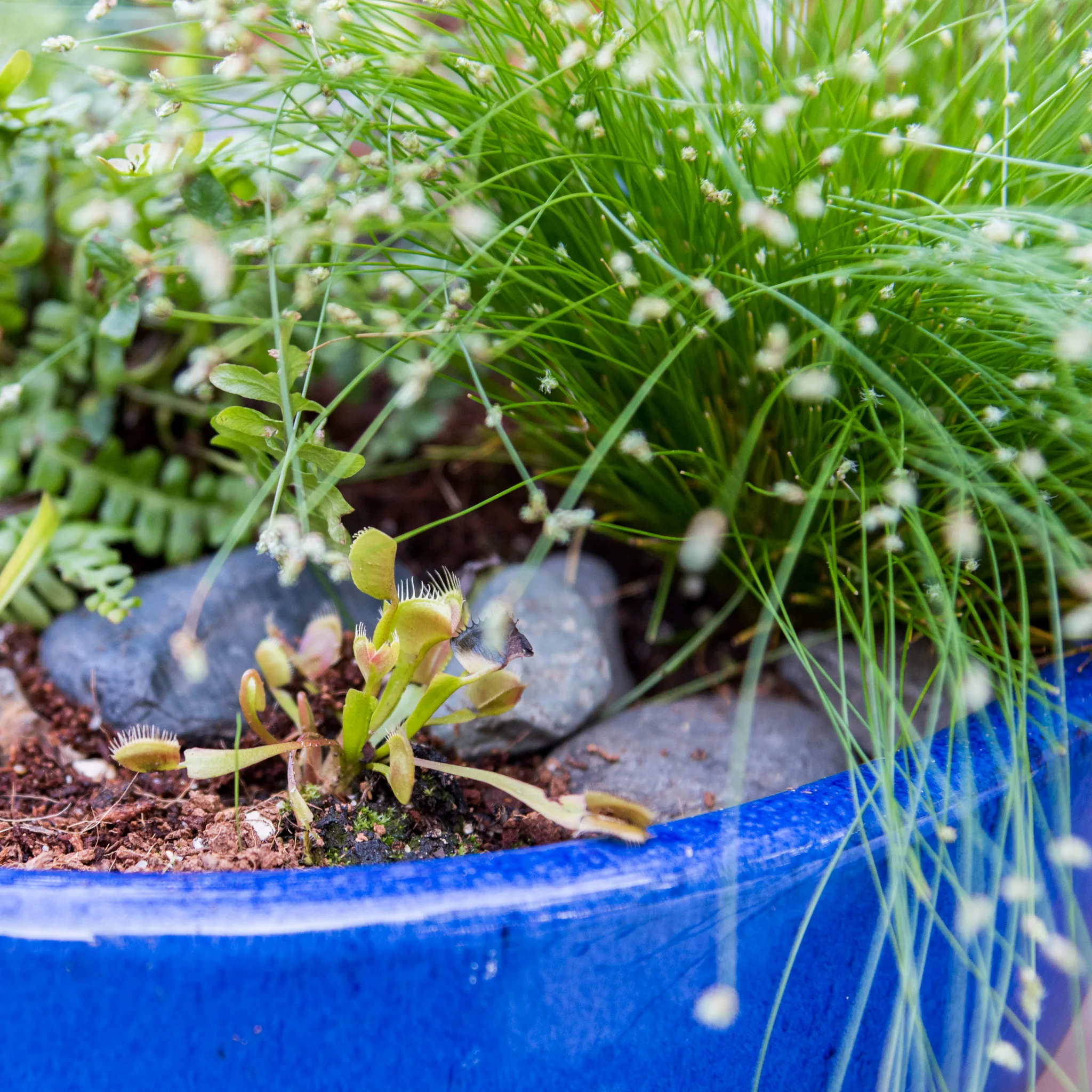
Weigh down the soil with rocks
To keep the soil from washing away in a hard rain, weigh down the top with small rocks. Keep them clear of the roots of the plants.
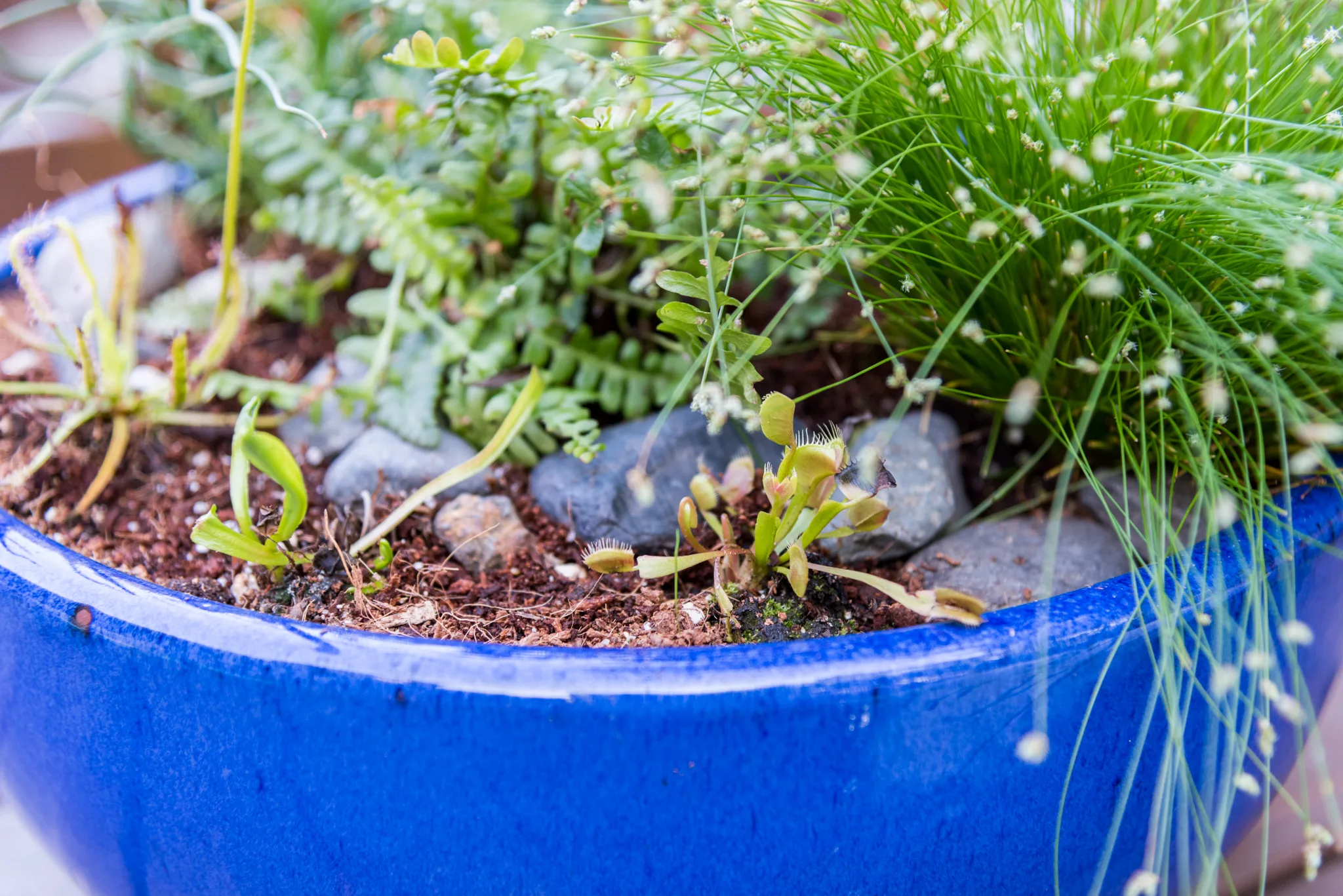
Carnivorous Plant Care
When your bog planter is outside, your carnivorous plants should catch plenty of insects on their own. If you're keeping yours indoors during the winter, you can try to feed them by hand! Here's a great guide for feeding carnivorous plants, or check out this cool video.
Water to the top
The type of water you use in this carnivorous bog planter is really important! DO NOT use tap water, which contains chlorine and other additives that will kill your plants over time. Distilled water works in a pinch, but they prefer rain water.
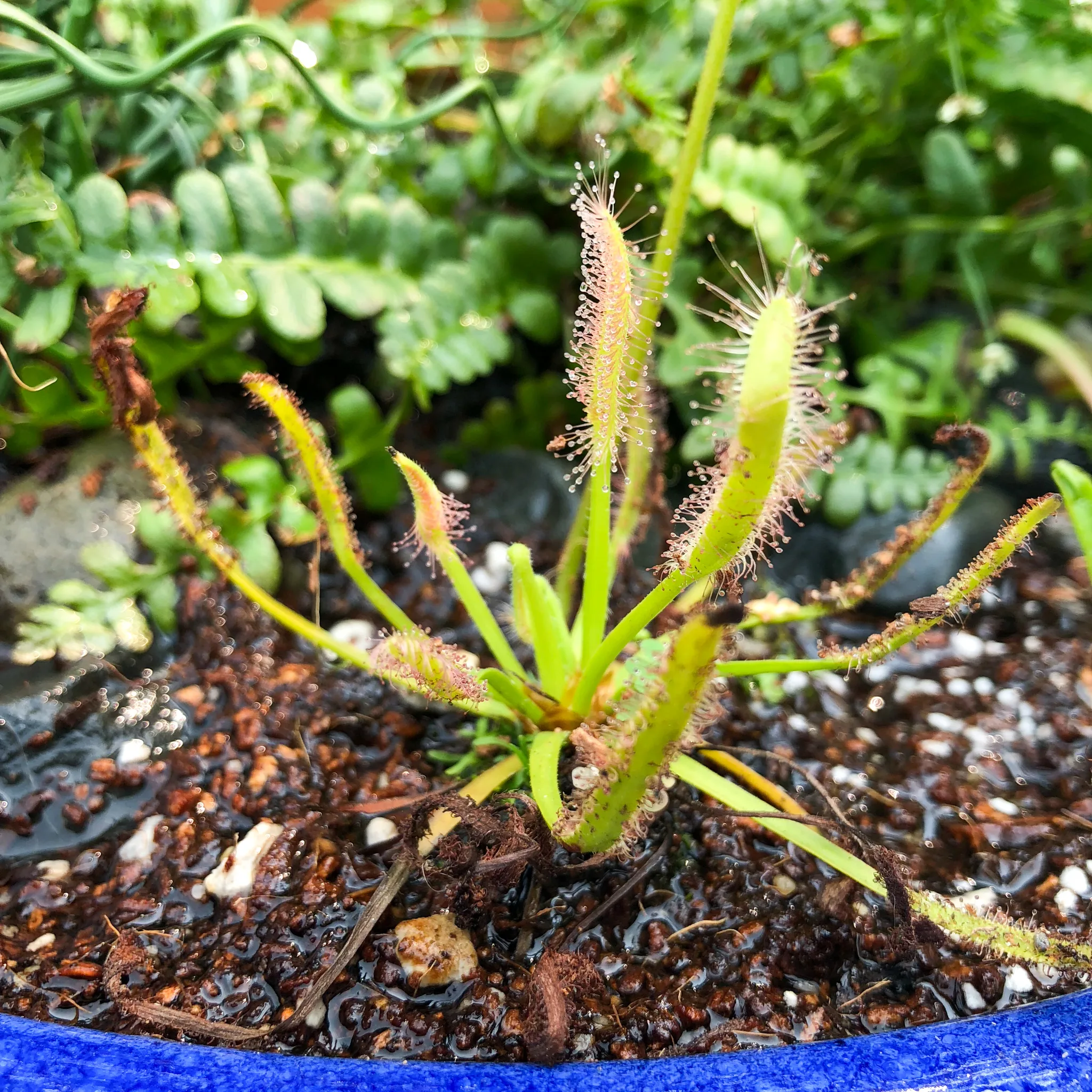
Fill the bowl all the way to the top with water. The soil should always be wet to simulate the bog environment. That should be no problem here in rainy Seattle! I took most of these photos before I watered the plants, but the photo above shows how damp the soil should be.
Sunlight
You would think these creepy plants would prefer to live in a dark, dank corner of the garden. But they actually grow best in full sun!
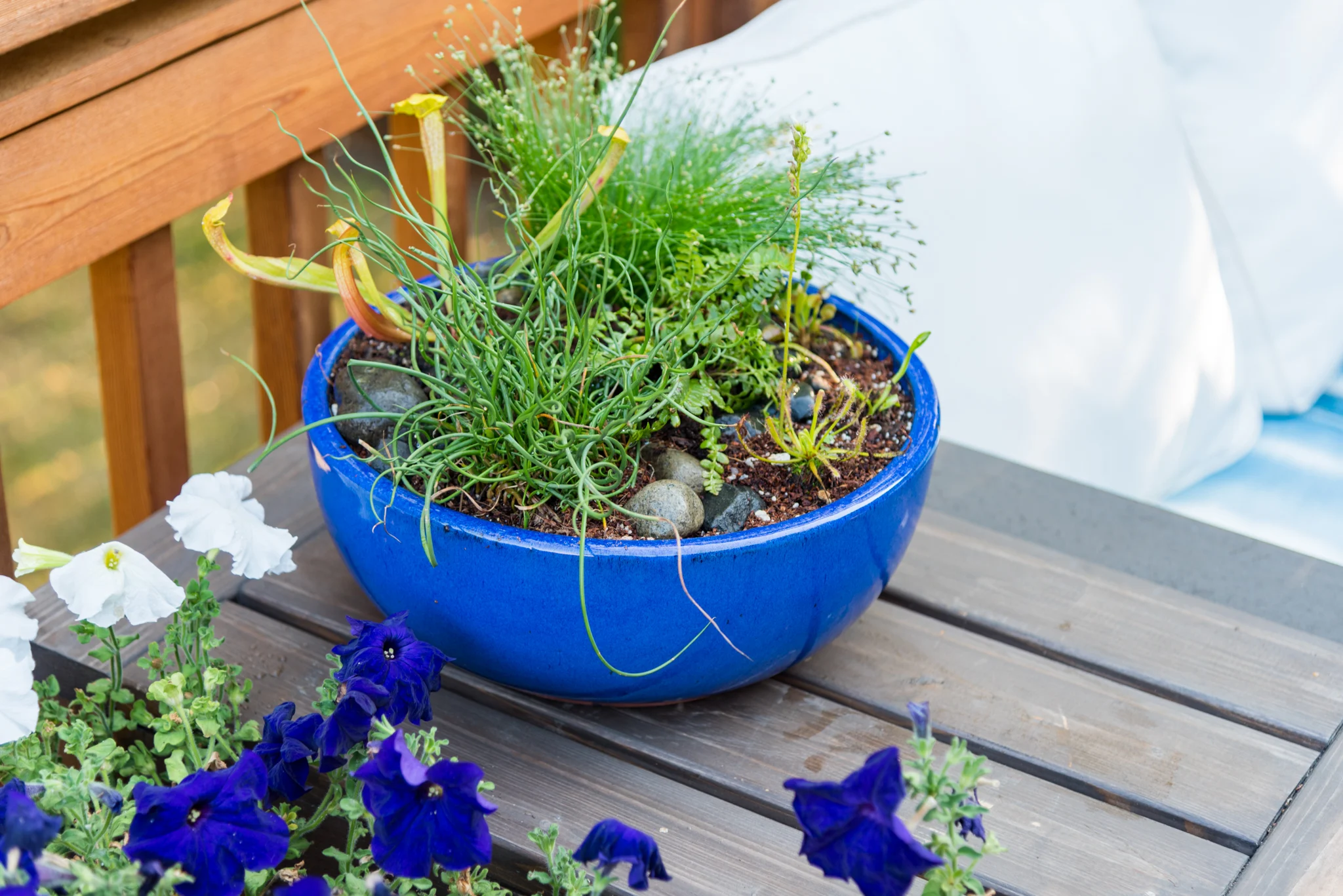
Keep your planter on a deck or patio with plenty of sunshine, and they'll happily keep your outdoor living space insect-free.
Caring for your Carnivorous Plants in Winter
Carnivorous plants will go dormant in the winter and stop growing. They can withstand temperatures down to 20°F at night, so long as it gets above freezing during the day. If the water in the soil will stay frozen for a week or more, it's best to take the planter inside.
My son loves his carnivorous plants, and has named each of them (Pitch, Sunny, Bitey and Jaws). 🙂 They're all thriving in their new bog planter!
Check out these other container garden ideas!

